BerlinRocks
Active Member
- Joined
- Dec 19, 2005
- Messages
- 11,216
- Reaction score
- 15
I went to the Museum of NYC, today.
pretty much randomly.
They have two interesting exhibitions (in a revival colonial 5th Av./Central Park address, from the 1930s ~ on 103th street... i merely go after 90th, it was the 1st time i visited this museum - and i think i will more often one about the Mad Men age (I find this crazy that this tvshow's become an adjectif/a style to define the 1950-1960s) illustrator: MC CONNER.
one about the Mad Men age (I find this crazy that this tvshow's become an adjectif/a style to define the 1950-1960s) illustrator: MC CONNER.
and there is a small exhibition on the third floor, a one year exhibition - (ongoing they say on the website - it closes in nov. 2014) in a purple room called Gilded Years (about wealthy american society/aristocracy/ the 1% of early modern days in NYC). There's like hardly 6 paintings (2 portraits of children - in retrospective this is pretty interesting to think they show 2 portraits of heirs), I would say a dozen window displays, and 1 "period room/scene" - at the end of the room.
Mostly vitrines showcase WONDERFULLY BEAUTIFUL jewelry, accessories of this time. There's a bit of silverware, "beauty kits" and "opera-cocktail-dinner kits" (gloves, accessories to handle the gloves, perfume bottle crafted with attention, details, gold, platinum, diamonds and more ravishing things - that you'll be able to carry in a tiny clutch - i was amazed how tiny certain things were). fans with amazing feathers. a wonderful and amusing pair of opera glasses with fan integrated.
In the hallway, one of the videos broadcasts images of the gilded years traditions of "bals costumes" (only balls in english, and not costumed balls... anyway). that was the beginning of the concept for this exhibition.
That was very eye-candy ! and pretty interesting.
NYTIMES ; images source WWD
pretty much randomly.
They have two interesting exhibitions (in a revival colonial 5th Av./Central Park address, from the 1930s ~ on 103th street... i merely go after 90th, it was the 1st time i visited this museum - and i think i will more often
 one about the Mad Men age (I find this crazy that this tvshow's become an adjectif/a style to define the 1950-1960s) illustrator: MC CONNER.
one about the Mad Men age (I find this crazy that this tvshow's become an adjectif/a style to define the 1950-1960s) illustrator: MC CONNER.and there is a small exhibition on the third floor, a one year exhibition - (ongoing they say on the website - it closes in nov. 2014) in a purple room called Gilded Years (about wealthy american society/aristocracy/ the 1% of early modern days in NYC). There's like hardly 6 paintings (2 portraits of children - in retrospective this is pretty interesting to think they show 2 portraits of heirs), I would say a dozen window displays, and 1 "period room/scene" - at the end of the room.
Mostly vitrines showcase WONDERFULLY BEAUTIFUL jewelry, accessories of this time. There's a bit of silverware, "beauty kits" and "opera-cocktail-dinner kits" (gloves, accessories to handle the gloves, perfume bottle crafted with attention, details, gold, platinum, diamonds and more ravishing things - that you'll be able to carry in a tiny clutch - i was amazed how tiny certain things were). fans with amazing feathers. a wonderful and amusing pair of opera glasses with fan integrated.
In the hallway, one of the videos broadcasts images of the gilded years traditions of "bals costumes" (only balls in english, and not costumed balls... anyway). that was the beginning of the concept for this exhibition.
That was very eye-candy ! and pretty interesting.
How the Original 1 Percent Showed Off
‘Gilded New York’ and ‘Beauty’s Legacy,’ Two Lifestyle Shows
The staggering sums spent on art at last week’s auctions were interpreted by dealers and critics alike as evidence of a new Gilded Age. At such a moment, it may be useful to take a hard look at the old one, the late-19th-century period defined by the aggressive buying sprees of a few newly minted industrialists.
Right now, New York, already blessed with the Frick and the Morgan museums and countless other examples of Gilded Age architecture, has two temporary monuments to that earlier era’s excesses in “Gilded New York,” at the Museum of the City of New York, and “Beauty’s Legacy: Gilded Age Portraits in America,” at the New-York Historical Society.
Art lovers, be warned: These shows are about lifestyle, not connoisseurship. Collecting, as seen here, is a particularly transparent form of social gatekeeping. And the exhibitions dutifully guard those gates: They don’t tell us much about the Gilded Age’s extreme disparities of wealth, aside from passing mentions in the glossy catalogs.
They do, however, have much to say about the imbalance of money and taste: that the spending of unfathomable amounts of money on art, fashion, parties and real estate had a tendency to stave off any discussion of taste.
“Gilded New York,” the smaller of the two shows, is a one-room affair. But it’s quite a period piece; the gallery, upholstered in eggplant-colored brocade and stuffed with silver and porcelain, could serve as a set for the latest Wharton adaptation or Julian Fellowes’s much-anticipated American follow-up to “Downton Abbey.”
Thematically, the show, curated by Donald Albrecht, Jeannine Falino and Phyllis Magidson, revolves around the ritual of the fancy-dress ball: an occasion for lavish expenditures by both host and guests. Two mannequins wearing evening dresses by Maison Worth of Paris have been posed conversationally before a fireplace surround of Italian marble; one of them is clad in the sparkling “Electric Light” dress, festooned with silver bullion, worn by Mrs. Cornelius Vanderbilt II at the Vanderbilt Ball of 1883. In the catalog, and just outside the gallery, photographs show guests at other balls dressed (with no apparent irony) as kings, queens and courtiers from Versailles.
NDLR: These 2 dresses are no longer in the show !
Unfortunately, there aren't enough costumes !!!!!
Jewelry cases hold accessories that would have been shown off at balls, operas and other society gatherings: diamond tiaras, fans made from the colorful plumage of exotic birds, gem-encrusted perfume bottles and bonbonnieres. The men’s items are no less extravagant: Sapphires and rubies adorn a pocketknife, and a cane has a secret compartment that opens to reveal a carved ivory figure of a female nude.
These and other decorative objects are the mainstay of “Gilded New York” — don’t miss the Far East-inspired earthenware that actually hails from Trenton and Brooklyn — but a few portraits animate the formal setting. One is Thomas Wilmer Dewing’s creamy, Whistleresque painting of DeLancey Iselin Kane as a coltish boy in a white sailor suit, with a carved and pierced wooden frame designed by Stanford White. Another is John Quincy Adams Ward’s bronze bust of August Belmont, the financier and sportsman for whom the Belmont Stakes race is named and reputedly the inspiration for the character of Julius Beaufort in Wharton’s novel “The Age of Innocence.”
“Beauty’s Legacy,” at the New-York Historical Society, on the other hand, consists entirely of portraits. Although less opulent-looking than “Gilded New York,” it’s richer in context and more character-driven, with plenty of information on the New York social set known as Mrs. Astor’s 400.
Organized by Barbara Dayer Gallati, it opens with a section on the Portrait Loan Exhibitions at the National Academy of Design, which were organized by leading society women and displayed their likenesses alongside earlier examples of American and European portraiture. Not surprisingly, many of the works selected for these events imitated the old masters; they include Daniel Huntington’s full-length, Gainsborough-inspired painting of Caroline D. Roberts, as well as Raimundo de Madrazo y Garreta’s homage to Velázquez in his portrait of the banker Robert Livingston Cutting Jr.
The watercolor-on-ivory miniatures from the collection of Peter Marié, meanwhile, represent a more casual form of portraiture, one with popular currency; they show society women in costume from the latest ball. But one of the show’s major insights concerns the changing representation of men, as captains of industry pushed aside the soldier-heroes of the Civil War era in the social hierarchy. A highlight is Theobald Chartran’s painting of the Equitable Insurance Company heir James Hazen Hyde, whose come-hither stare is conspicuously modeled on Bronzino’s “Portrait of a Young Man.”
Also intriguing is the relationship between the American elite and its European counterpart, joined by “Downton”-style marriages and the quickening pace of trans-Atlantic travel. As the show reveals, artists like Émile Carolus-Duran and his protégé, John Singer Sargent, were in demand in both markets.
Our Gilded Age is, of course, a much more global affair, which makes it difficult to compare with the one in these exhibitions. The “400” have been superseded by an international register of 2,000-plus billionaires, the fancy-dress balls by Art Basel.
But we may observe, in these galleries, a confluence of art, wealth and celebrity that looks very familiar.
“Gilded New York” runs through November 2014 at the Museum of the City of New York, 1220 Fifth Avenue, at 103rd Street; 212-534-1672, mcny.org. “Beauty’s Legacy: Gilded Age Portraits in America” runs through March 9 at the New-York Historical Society, 170 Central Park West, at 77th Street; 212-873-3400, nyhistory.org.
NYTIMES ; images source WWD


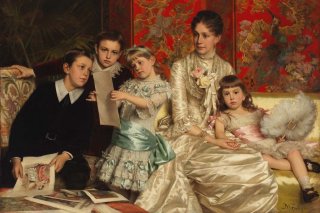
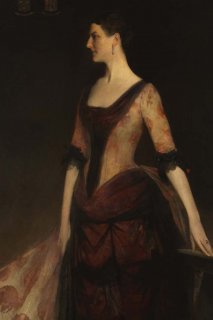
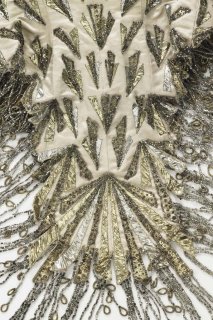












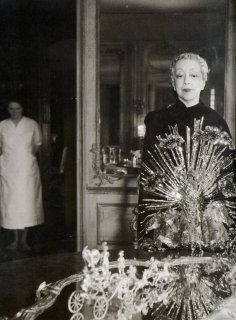
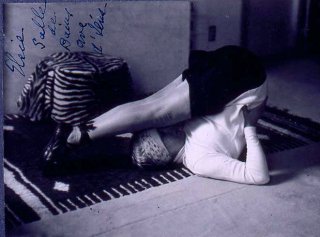
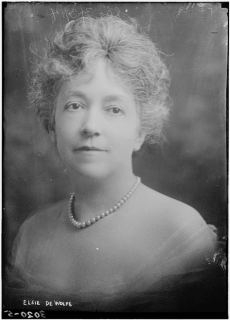
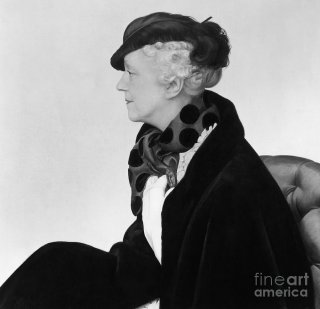

 ...
...














 28 courses.....
28 courses..... 

 :
: 





